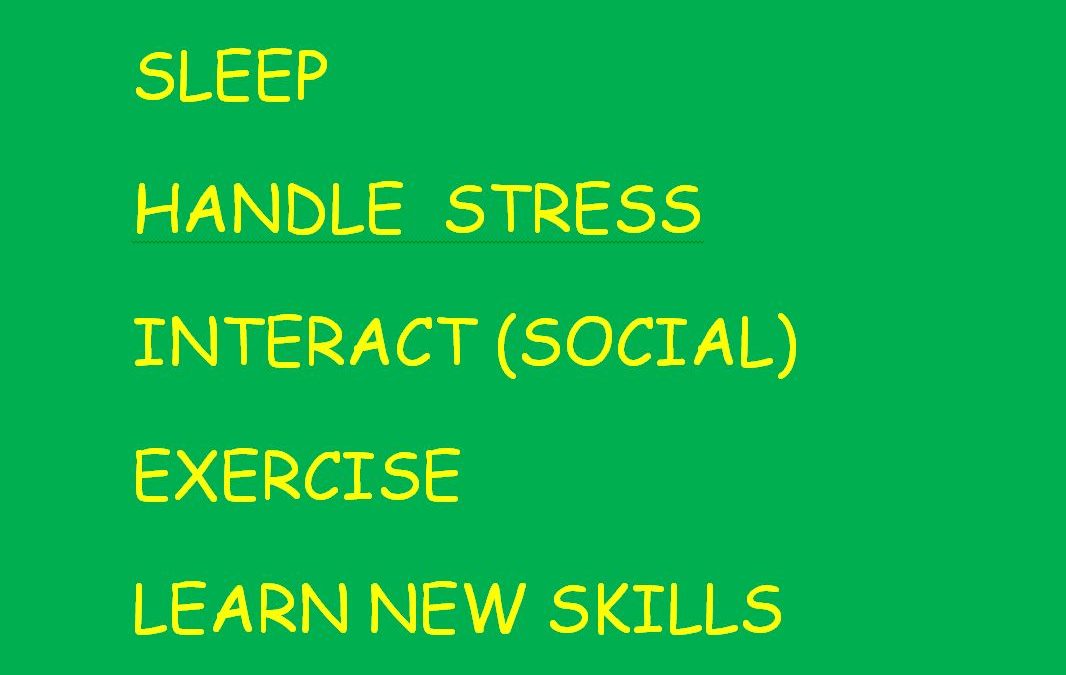
by Rev. Michael Heath | Dec 30, 2019
As we come to the end of the year, encouraged by tradition and media hype, many will think about new year’s resolutions and making important changes in their lives.
Likewise, many will look back on the year just past with disappointment and discouragement over the well intentioned but failed efforts from the previous year’s resolution list.
Frankly, change is hard. It takes more than good intentions to actually succeed in making significant and needed improvements in our lives. Many who undertake plans for things like losing weight, quitting smoking or exercising more, for example, fail to understand the necessary factors which are required on one hand and those which work against change on the other.
Taking a little time to reflect may not only improve your chances of succeeding but also help to help you to avoid the pain of not following through. With these complications and pitfalls in mind, here are a some things to think about before undertaking the challenge of a new year’s resolution .

by Rev. Michael Heath | Dec 15, 2019
It is tough to be blue during the holidays. Amid the hustle and bustle of the pre – Hanukkah and Christmas hype there are many folks for whom the season is not joyous or bright.
Although many of us look forward to Christmas as a time for gifts and to celebrate family and friends, there are many others for whom the occasion is difficult and even painful. Death , divorce, financial troubles , loneliness , depression and failing health are but a few of the reasons which keep many folks from experiencing the full joy of the holiday.
While we can’t make things all better when we encounter someone who is blue, being aware of his or her plight can help us to be more sensitive and compassionate in our interactions with them. It is important to remember that what folks who are blue really need during this painful time is empathy and understanding. Here are some tips to help you improve your empathy skills and to show more kindness and sensitivity to those you meet :

by Rev. Michael Heath | Dec 1, 2019
Infidelity is one of most painful issues married couples ever face. While the emotional wounds created by the break in trust are sometimes too great to repair, I have found that if the offending partner is sincerely repentant, remorseful and willing to work on the individual or relational issues which lead to the problem and, if the offended partner is sincere in his/her desire to reconcile and accepts that most infidelity stems from deeper relational issues which involve both partners, the wound can be healed, trust can be rebuilt and the marriage can actually grow and mature in deeper intimacy.
Over my many years of practice, I have discovered a fundamental communication deal, which, if agreed to and followed by both partners, can , with practice, accelerate healing and renewed confidence in their loyalty and fidelity. However, although the terms of the deal are very simple , carrying out the deal is complicated and difficult. Let me explain.

by Rev. Michael Heath | Nov 17, 2019
Expectations. We all have them, that is to say we all have a sense of what is going to happen in our lives. We have routines which we follow and much of our life is predictable. Part of life, however, is unpredictable and folks who naively or uncritically assume outcomes without sufficient reason can be shocked and sadly disappointed.
Indeed, unrealistic expectations or expectations that are not met are a major source of distress in life. The spectrum of disappointment is wide and ranges from trivial things like a sports team losing a game or running into a long line at the bank all the way to a life-crisis event like losing a job or being told that one has a serious disease.
There are lots of events in the middle, however, which, while not serious with a capital S, nonetheless, create inconvenience or worse. Being caught off guard by these kinds of life events is not only frustrating but an situation which can trigger an anger reaction causes us to act out in ways that are socially disruptive and unpleasant for everyone involved. Indeed, being shocked by unexpected happenings is one of the biggest causes of unpleasant outbursts of anger.
Today, we are going to look at how to 1) recognize amygdala-based reactions which often result from unrealistic or unmet expectations, 2) how to calm and reality-test panicked perceptions which generates anger outbursts and 3) how to problem-solve your way to more rational responses to negative and unexpected life events.

by Rev. Michael Heath | Nov 3, 2019
Many have commented about the coarsening of our society and the decline of basic civility in politics and in every day life. Psychologically, this change in public decorum correlates with the complexification of life and a greatly reduced sense of control that people experience over there own lives.
Nowhere is the loss of control more painfully experienced than in intimate relationships and marriage. Indeed, one of the most common complaints of couples is that they feel that their partner is too “controlling”. Here are some important facts about our needs for control and some tips for dealing with controlling people:
1) No one has the right to try to control their partner.
2) Attempts to control are signs of anxiety and panic.
3) When in a state of panic, a person is not in touch with their cortex and thus he/she can not think reasonably.
4) It is not helpful or productive to attempt to struggle with someone who is in a panicked state.
5) Only when the experience of anxiety has been lowered can a productive conversation and respectful negotiations to reach mutually agreeable solutions take place .

by Rev. Michael Heath | Oct 16, 2019
Violent and uncontrolled expressions of anger are some of the most threatening emotional, social and cultural issues plaguing our society. One of the especially frustrating aspects of anger is its explosive nature which may erupt without warning.
Although it takes practice, a helpful skill to acquire to control the raw acting out of anger feelings is to delay the urge to immediately discharge the impulse . Using the mental image of a Tupperware container , along with breathing exercises, is an effective way to defer the immediate and unfiltered release of anger impulses and to allow time for a more reasonable response to be made . Here is how they work together to give you more control.

by Rev. Michael Heath | Oct 3, 2019
Recently, a husband in a counseling session turned and asked me to tell his wife that she was crazy. In declining to do so I asked if he could tell me what he was feeling when he made his request. He responded by saying that he felt exasperated. Indeed , sometimes we hurl words like nuts or crazy when we are frustrated and don’t know what else to do. When we feel powerless, name-calling is sometimes the only thing we can think of to do. That’s because cutting remarks about the other person makes them appear smaller and makes us feel better .
Apart from the session, it got me to thinking about how his comment , in addition to being hurtful, is a sign that, despite all that we have learned and despite all the progress that we have made, that we still have a long way to go to get beyond the fear and stigma attached to mental health issues.
Part of the prejudice stems from ignorance and a gross misunderstanding of psychological disorders. This confusion has been and continues to be perpetuated, in part, by the common usage of antiquated and misleading terms such as “crazy” and “nuts”.
Today, let’s explore the linguistic origins these hurtful anachronisms and consider better alternatives to use when discussing mental health issues.

by Rev. Michael Heath | Sep 21, 2019
This is Alzheimer’s awareness day and here is an acronym that everyone should learn: S.H.I.E.L.D.
SH.I.E.L.D. stands for the six things that everyone can do to help protect their brain from this dreaded disease.
In the past research was aimed at protein build-up (plaques and tangles) but the latest thinking is that INFLAMATION is the culprit.
Here are six life-style changes that can help reduce inflammation in the brain and better protect you from Alzheimer’s disease.

by Rev. Michael Heath | Sep 16, 2019
The incessant reports of gun violence has stimulated deeper questions about the very notion of human sin and evil. A recent report in the New York Times interviewed a theologian and a psychiatrist about their understanding of these mysteries. As one who is an ordained minister and also a licensed psychotherapist, I found the discussion fascinating and relevant to modern concerns about why bad things such as mass shootings happen. Further, the dialog provides a good example of the kinds of issues which pastoral counselors address.
In a recent article in the New York Times a theologian and a psychiatrist were asked about their understanding of evil and sin. Specifically, the psychiatrist expressed the widely held view of how modern brain research and psychology understands the concepts of evil and sin. This evolving bio/psycho/social perspective provides a different slant on traditional religious views of evil but, ultimately, is congruent with the fundamental message of biblical beliefs. Here is a look of how science informs and relates to the theological concept of sin.

by Rev. Michael Heath | Sep 7, 2019
A few weeks ago, I wrote about how to employ first-aid for anxiety. In that discussion, the type of anxiety being addressed was the kind which was triggered by a perceived external stressor in the person’s environment, such as a having a difficult conversation with a person or receiving bad or threatening news .
— Today I want to talk about a different kind of anxiety which can also produce intense dysphoric symptoms but which originates in the neo-cortex of the brain and comes from an internal-anticipated threat, rather than an actual or immediate one.
— Rather than relying on physical isolation from the distressing stimulus, a technique which I call Sensational Distraction (SD) can be used to disrupt distract the stressful cascade of thoughts and anxious feelings. With SD a person can shift the focus and attention of their immediate experience from thinking thoughts to perceiving sensations in their body and thus stop the flow of disturbing thoughts and calm the distressed state of mind.
— Although many distractors can be used , an especially effective technique for lessening and stopping anxiety I call the Orange. The orange relies on SD and is the first step, after a person realizes that they are experiencing anticipatory anxiety, calming one’s mind. The technique involves four steps and goes like this:










